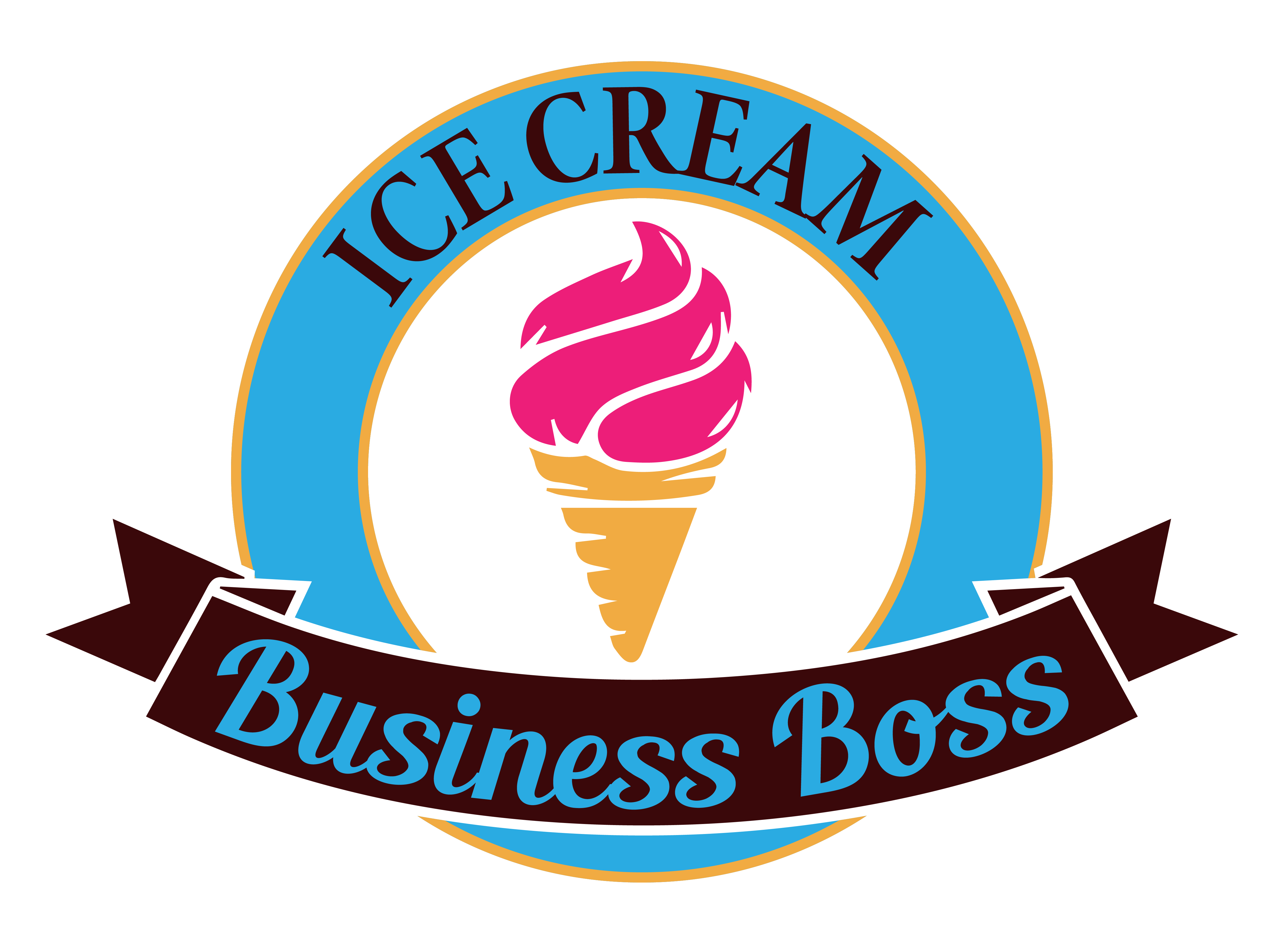Ice cream is more than just a delectable delicacy; it’s a dream, a passion, and, for many aspiring entrepreneurs, an untapped business potential. Starting an ice cream business may be a delectable adventure full of pleasant hurdles and the possibility of sweet achievement. However, as with any endeavor, it necessitates precise planning and smart thinking.
To create an ice cream business plan project, you should start by defining your ice cream concept, target market, and unique selling points. Estimate startup costs, revenue, and expenses. Develop a marketing plan and outline daily operations, staffing, and suppliers for your ice cream business project.
In this article, we’ll go on a journey to create an ice cream business plan project – the blueprint that will help you convert your ice cream ideas into a thriving reality. So grab a scoop and join me as we explore the delightful world of ice cream entrepreneurship.
Defining Your Ice Cream Concept
Establishing your concept is the first step in building a strong basis for your ice cream company strategy. Your concept is more than just a hazy idea; it is the foundation on which your entire business will succeed or fail.
Think carefully about the kind of ice cream you want to offer the world as you set out on this trip. Will every scoop bring back memories as it celebrates classic favorites? Or maybe the appeal of gourmet flavors has you reaching your taste and imagination’s limits? As an alternative, you might visualize a harmonic union that combines the thrill of new inventions with the familiarity of oldies.
Take into account the various food choices of your potential clients. Will you provide vegan or lactose-free choices to accommodate those with dietary requirements, ensuring inclusivity and boosting your consumer base?
Identifying Your Target Market
Understanding your target market is essential to the growth of your ice cream company. It’s important to create an experience that genuinely connects with your potential customers rather than only selling frozen delights to them. You must first recognize them and comprehend them profoundly to accomplish this.
Demographics are crucial to this endeavor. Who would make the ideal customers? Are they kids, teenagers, families, or people indulging in their nostalgia? To match your offerings and price with their expectations, identify their age, gender, location, and income levels.
The discussion goes beyond demographics, though. Investigate psychographics to uncover the complex nuances of your audience. What kind of lifestyle do they lead? Do they appreciate choices that are healthy or are they purely indulgent? It would be easier for you to customize not only your ice cream flavors but also your branding and marketing techniques if you are aware of their values, interests, and purchase behaviors.
Highlighting Unique Selling Points

The importance of Unique Selling Points (USPs) in the intensely competitive ice cream market cannot be emphasized. These are the distinctive features of your ice cream business that not only set it apart from the competition but also make it enticingly alluring to clients.
There are many different types of USPs, and each has its unique appeal. You might decide to specialize in creating unique flavor combinations that take taste buds on a lovely trip of unanticipated pleasures, for example. Alternatively, in a market flooded with mass-produced options, your dedication to utilizing only the best ingredients, acquired locally or sustainably, might distinguish your ice cream.
Consider the eco-friendly packaging as a compelling USP in addition to the contents of the cone or cup. An effort like this attracts eco-conscious customers and demonstrates your dedication to ethical company operations in an era where environmental awareness is crucial. The atmosphere of your ice cream shop may be a USP by itself. A memorable experience can be created by beautiful, customized décor, transforming a straightforward trip for ice cream into a fascinating adventure.
Check out this article to learn more about creating a business plan for ice cream shops.
Estimating Startup Costs
Starting an ice cream business requires having a thorough understanding of your initial costs. This financial foundation is crucial because it covers a wide range of expenses that will determine how your business will be built.
Finding the best location for your ice cream shop is crucial to start with. Take into account elements like accessibility, visibility, and foot traffic. A significant upfront expenditure is frequently required when renting or buying a space, including security deposits and perhaps renovation costs to turn it into a delightful ice cream heaven.
Another important cost is making the appropriate equipment investments. This comprises kitchen equipment, display cabinets, storage freezers, and ice cream makers. Your equipment’s quality has a direct impact on the quality of your finished goods.
Remember the administrative requirements. It is necessary to obtain permits and licenses, such as health permits and food service licenses, and there are expenses involved. These legal requirements make sure you’re functioning within the law.
Always factor in contingencies when evaluating your initial expenditures. To prepare for unforeseen financial difficulties, it is wise to estimate spending too highly. In business, Murphy’s Law frequently comes into play, and having a cash cushion can be a lifesaver in trying times.
Projecting Revenue and Managing Expenses
It’s important to anticipate your revenue potential, as well as the costs associated with starting an ice cream business. This forward-thinking attitude is crucial for succeeding in a cutthroat market rather than merely surviving it.
To determine the size of your potential consumer base, start by conducting extensive market research. To gauge foot traffic and customer demand, consider demographics, the environment, and competition. Because ice cream tends to be more popular during the warmer months, take into account seasonal fluctuations in sales. Estimate the average sales per customer while taking pricing, serving sizes, and repeat business into account.
These forecasts will be crucial in figuring out when your company might anticipate reaching break-even and turning a profit. Knowing your break-even point is an important accomplishment since it sets a specific goal for financial stability.
Make a budget that includes ongoing operational costs in addition to the original costs. Rent or lease payments, utilities, raw materials, employee salaries, and marketing costs should all be included. As your business grows and changes, periodically examine and modify your financial plan. You can adjust your income estimates and planning to match the actual performance of your ice cream business as you acquire expertise and gather real-world data.
Developing a Marketing Plan

A thoughtful marketing strategy is the proverbial cherry on top of your company plan in the fiercely competitive ice cream sector. It’s your pass to building a powerful brand presence in addition to drawing in customers.
Establish your brand identity and positioning before starting your marketing campaign. Recognize the distinctive qualities of your ice cream company and the image you wish to project. This serves as the lynchpin of your messaging and directs all of your marketing initiatives.
Then, describe your marketing plans, taking into account both physical and internet media. Utilize social media’s influence to interact with your audience, share tantalizing images of your ice cream creations, and develop a strong online following.
A decent website is necessary since it acts as your online storefront where clients can view your products and make purchases. To increase your presence in the neighborhood, think about using local advertising techniques like fliers, posters, and partnerships with adjacent businesses.
Promotions, events, and customer loyalty programs are all included in a dynamic marketing plan. These programs not only draw in new clients but also keep current ones coming back for more mouthwatering sundaes. Hosting activities like ice cream-tasting parties or workshops can develop a sense of belonging and make people smile. Special promotions for holidays or seasonal flavors can generate buzz.
Outlining Daily Operations
A thriving ice cream business is built on the rock-solid foundation of efficient everyday operations. Customer happiness, as well as the maintenance of your reputation and revenue, are all guaranteed by the flawless coordination of your store’s daily operations.
Create an extremely thorough plan for your store’s daily operations to start. This plan should include opening and closing procedures, and defining the duties that must be fulfilled to keep the firm operating efficiently. To prepare for a new day, this includes chores including checking equipment, replenishing supplies, and cleaning practices.
In the realm of ice cream, quality control is crucial. To guarantee that your frozen delicacies continuously live up to the high demands of your customers, establish strict standards and procedures. This includes the appearance and cleanliness of your store as well as the presentation and flavor of your ice cream.
Another essential component of day-to-day operations is efficient inventory management. Your business may suffer if popular tastes or necessary supplies run out. Establish reorder points and inventory tracking systems to avoid these mistakes and make sure you’re constantly ready to sate client appetites.
Make sure that everyone understands their roles and duties in maintaining the quality and efficiency of everyday operations by clearly defining employee obligations and offering thorough training.
Wondering what’s inside of a thriving business plan? Visit our article here to find out the answer.
Staffing Your Ice Cream Business
Building a capable and dedicated workforce is essential if you want to flourish in your ice cream business. Your employees are the foundation of your business’s customer service and product quality, serving as more than just its public face.
Create thorough job descriptions for every position in your ice cream parlor, from scoopers to supervisors, as a starting point. It is simpler to hire the right people who are in line with the goals and values of your company when the job description is clear and concise.
It’s equally important to invest in quality training. Make sure that every employee, regardless of rank, receives in-depth training in providing customer care and making ice cream. To develop trust and a good reputation, consistency is essential in both customer interactions and ice cream quality.
The importance of employee satisfaction cannot be understated. Happy workers are more likely to deliver excellent service and stay committed to your company. Employ tactics to promote a favorable work environment, such as competitive pay, chances for advancement, and recognition programs. In addition to excelling in their jobs, motivated and happy staff will also contribute to a harmonious environment, which improves client experiences.
Continual training and development programs can also assist personnel in staying up to date with market developments and continuously developing their skills. A return on this investment in your team may be seen in the form of improved customer service and staff retention.
Building Supplier Relationships

Suppliers are crucial to maintaining the consistency and quality of your frozen treats in the complex environment of your ice cream business. Building and maintaining trusting relationships with dependable suppliers is crucial for the efficient and fruitful functioning of your business.
Find vendors who can reliably deliver the premium ingredients and machinery that your ice cream business needs. Find people who share your passion for quality and are eager to collaborate with you intimately to meet your unique demands. For you to develop a devoted consumer base, consistency in the quality of your ingredients instantly translates into consistency in the flavor and texture of your ice cream.
Equally crucial is reaching agreements on pricing and acceptable terms with your suppliers. Cost management is a key component of managing a thriving business. To efficiently manage expenses and preserve the quality of your products, try to find a balance. This could entail long-term contracts that guarantee favorable prices or bulk purchasing arrangements.
It is a continuous task to assess supplier performance regularly. Keep an eye on things like product quality, delivery schedules, and dependability. To keep your company’s operations operating with integrity, deal with any problems right away.
Frequently Asked Questions
What are some of the most common difficulties encountered when beginning an ice cream business?
Starting an ice cream business can be gratifying, but it is not without its difficulties. Intense rivalry, seasonal changes in sales, and the requirement for high-quality ingredients and equipment are all common challenges. Navigating health and safety requirements and maintaining perishable goods can also be difficult.
How can I locate the best location for my ice cream shop?
It is critical to select the appropriate site. Look for regions with a lot of foot traffic, especially in hot weather or tourist attractions. Consider the location’s proximity to schools, parks, and other family-friendly attractions. Consider the demographics of the neighborhood to verify that it suits your target market.
How important is branding in the ice cream industry?
Branding is important in acquiring and maintaining clients. A good brand identity can help you stand out from the crowd. It includes your company name, logo, retail design, and overall consumer experience. A strong brand can help you build a loyal consumer base and increase the perceived value of your ice cream items.
The information provided by IceCreamBusinessBoss.com (“The Site”) is for general informational purposes only. All information on the Site is provided in good faith, however, we make no representation or warranty of any kind, express or implied, regarding the accuracy, adequacy, validity, reliability, availability, or completeness of any information on the Site. Under no circumstance shall we have any liability to you for any loss or damage of any kind incurred as a result of the use of the Site or Reliance on any information provided on the Site. Your use of the Site and your reliance on any information on the Site is solely at your own risk. This blog post is for educational purposes only and does not constitute legal advice. Please consult a legal expert to address your specific needs. Terms and Conditions.

Hi! I am Shawn and I am a happy individual who happens to be an entrepreneur. I have owned several types of businesses in my life from a coffee shop to an import and export business to an online review business plus a few more and now I create online ice cream/gelato business resources for those interested in starting new ventures. It’s demanding work but I love it. I do it for those passionate about their business and their goals. That’s why when I meet a ice cream/gelato business owner, I see myself. I know how hard the struggle is to retain clients, find good employees and keep the business growing all while trying to stay competitive.
That’s why I created Ice Cream Business Boss: I want to help ice cream and gelato business owners like you build a thriving business that brings you endless joy and supports your ideal lifestyle.

